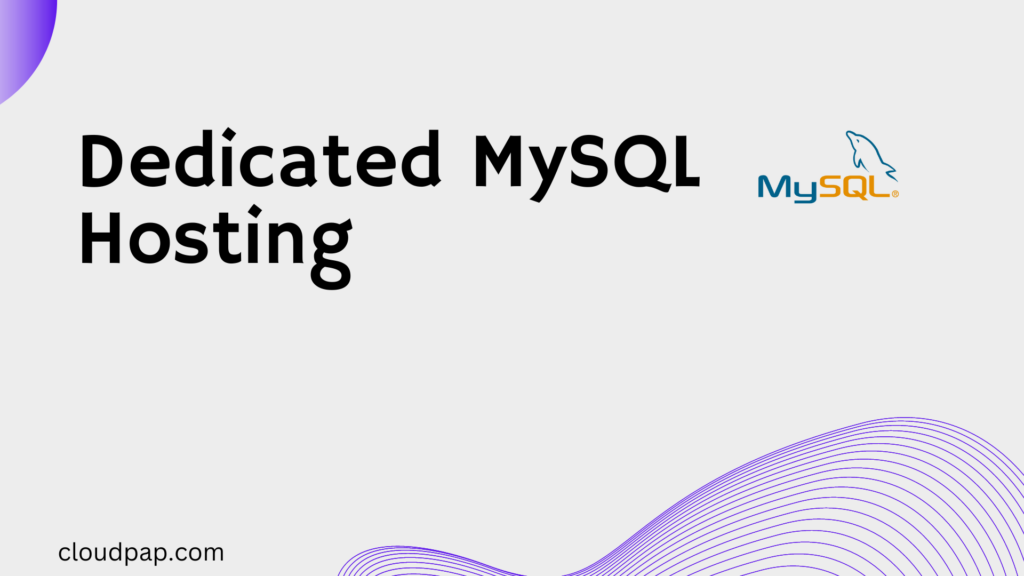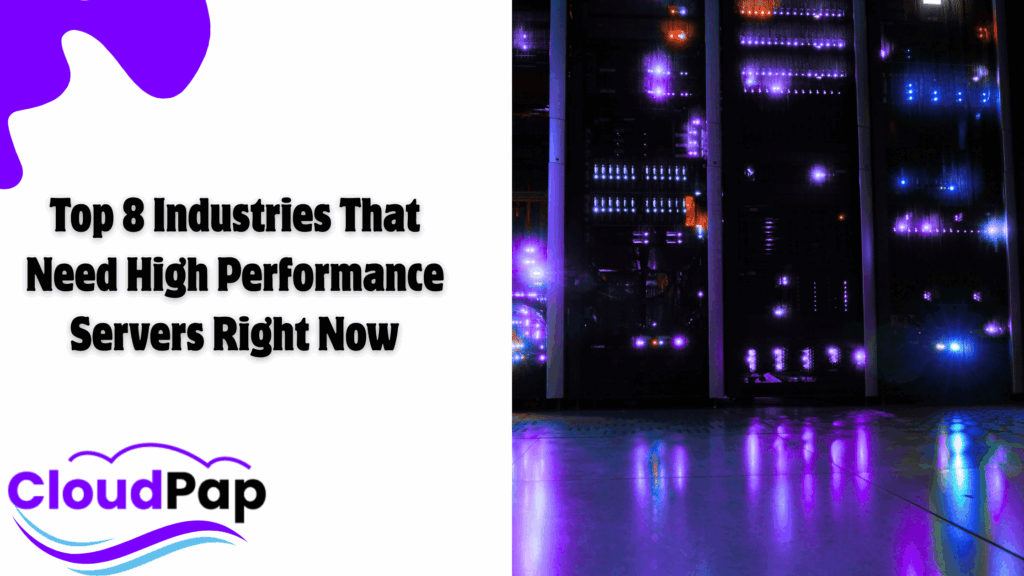Thanks to today’s data-driven world, the rise of data analytics has revolutionized how businesses operate. Organizations across industries are harnessing the power of data to gain valuable insights and make informed decisions.
However, traditional on-premises infrastructure may not always meet the demands of handling vast amounts of data and performing complex analytics tasks.
This is where cloud computing comes into play.
What is Cloud Computing?
Cloud computing refers to the delivery of computing services over the internet.
It involves the provision of on-demand access to a shared pool of computing resources, including networks, servers, storage, applications, and services.
Instead of relying on local servers and infrastructure, cloud computing allows users to access and utilize these resources remotely, from anywhere in the world.
Characteristics of Cloud Computing
Cloud computing exhibits several key characteristics that distinguish it from traditional computing models. These include:
- On-Demand Self-Service: Users can provision and manage computing resources, such as storage or virtual machines, without requiring human interaction with the service provider.
- Broad Network Access: Cloud services are accessible over the network through various devices, such as laptops, smartphones, and tablets.
- Resource Pooling: Computing resources are pooled and shared among multiple users, allowing for efficient utilization and scalability.
- Rapid Elasticity: Resources can be scaled up or down quickly and automatically, enabling organizations to adapt to changing demands.
- Measured Service: Cloud providers monitor resource usage and charge customers based on their consumption, allowing for cost optimization and transparent billing.
Why Cloud Computing for Analytics?
Cloud computing offers numerous advantages for analytics purposes. It enables organizations to overcome the limitations of traditional infrastructure by providing scalability, flexibility, cost efficiency, accessibility, collaboration, and enhanced security for their analytics workloads. By leveraging cloud computing for analytics, businesses can unlock the full potential of their data and gain a competitive edge in the market.
Types of Cloud Computing Models
Cloud computing can be classified into three primary models: public cloud, private cloud, and hybrid cloud.
Public Cloud
Public cloud services are provided by third-party providers and are accessible to the general public over the internet. These services are hosted on the provider’s infrastructure, and users share the same pool of resources. Public clouds offer high scalability, cost-effectiveness, and eliminate the need for organizations to manage their own infrastructure.
Private Cloud
Private clouds, on the other hand, are dedicated to a single organization. They can be located on-premises or hosted by a third-party service provider. Private clouds provide enhanced security, greater control over resources, and are often preferred by organizations with strict compliance requirements or sensitive data.
Hybrid Cloud
A hybrid cloud combines elements of both public and private clouds, allowing organizations to leverage the benefits of both models. It enables seamless integration between on-premises infrastructure and public cloud services, providing flexibility, scalability, and the ability to choose the most suitable deployment options for different workloads.
Benefits of Cloud Computing for Analytics
a). Scalability and Flexibility
One of the significant advantages of cloud computing for analytics is the ability to scale resources up or down based on demand. Cloud providers offer virtually limitless computing power and storage capacity, allowing organizations to handle massive data volumes and perform complex analytics tasks without worrying about resource constraints. This scalability ensures that businesses can keep pace with growing data requirements and handle peak workloads efficiently.
b). Cost Efficiency
Cloud computing offers cost efficiencies compared to traditional on-premises infrastructure. Instead of investing heavily in hardware, software licenses, and maintenance, organizations can opt for a pay-as-you-go model, paying only for the resources they consume. This reduces capital expenditure and allows businesses to allocate their budget more effectively. Additionally, cloud services eliminate the need for organizations to manage and upgrade hardware, saving time and effort.
c). Accessibility and Collaboration
Cloud-based analytics solutions enable easy access to data and analytics tools from anywhere, at any time, using a variety of devices. This accessibility promotes collaboration among team members, regardless of their geographical locations. Employees can collaborate on projects, share insights, and work on analytics tasks simultaneously, fostering teamwork and increasing productivity.
d). Security and Data Protection
Cloud computing providers invest heavily in security measures to protect data and infrastructure. They employ robust encryption techniques, implement strict access controls, and have advanced threat detection and prevention systems in place. Cloud providers also comply with industry-recognized security standards and certifications, ensuring that data is stored and transmitted securely. By leveraging the expertise and infrastructure of cloud providers, organizations can enhance their data security and protect sensitive information.
Cloud-Based Analytics Solutions
Overview of Cloud-Based Analytics
Cloud-based analytics solutions encompass a range of services and tools that enable organizations to perform data analysis, extract insights, and drive informed decision-making. These solutions leverage the power of cloud computing to offer scalability, performance, and cost advantages over traditional analytics approaches.
Cloud-Based Data Warehousing
Data Storage and Management
Cloud-based data warehousing provides a robust and scalable solution for storing and managing large volumes of data. It allows organizations to consolidate disparate data sources into a central repository, facilitating easy access and analysis. Data warehousing in the cloud offers high reliability, durability, and the ability to handle structured, semi-structured, and unstructured data.
Scalability and Performance
Cloud data warehouses can scale horizontally and vertically to accommodate changing data volumes and analytical workloads. They provide the ability to add or remove computing resources on-demand, ensuring optimal performance even during peak usage. Additionally, cloud providers offer advanced data processing capabilities, such as parallel processing and distributed computing, to accelerate analytics tasks.
Real-Time Analytics
Cloud-based data warehousing platforms often support real-time data ingestion and analytics. This enables organizations to derive insights from streaming data sources and make immediate decisions based on up-to-date information. Real-time analytics is particularly valuable in scenarios such as fraud detection, dynamic pricing, and IoT (Internet of Things) applications.
Related: 5 Main Uses Of Cloud Computing In Agriculture
Cloud-Based Business Intelligence (BI) Tools
Reporting and Visualization
Cloud-based BI tools empower users to create interactive reports and visually appealing dashboards. These tools offer a range of visualization options, such as charts, graphs, and maps, to present data in a meaningful and easily understandable format. With drag-and-drop interfaces and intuitive features, business users can generate reports and share insights without heavy reliance on IT departments.
Interactive Dashboards
Cloud-based BI solutions provide interactive dashboards that allow users to explore data, drill down into specific details, and uncover trends or patterns. Users can customize dashboards to display relevant key performance indicators (KPIs), track progress towards business goals, and gain actionable insights. Interactive dashboards promote self-service analytics and empower business users to make data-driven decisions.
Ad-Hoc Querying and Analysis
Cloud-based BI tools enable ad-hoc querying and analysis, allowing users to explore data and ask ad-hoc questions on the fly. With intuitive query builders and natural language interfaces, business users can quickly retrieve specific data sets, apply filters, and perform calculations without deep technical knowledge. Ad-hoc analysis empowers users to explore data independently and uncover valuable insights that can drive business growth.
Cloud-Based Machine Learning and AI
Predictive Analytics
Cloud computing provides a powerful platform for implementing predictive analytics models. Machine learning algorithms can be trained on large datasets stored
in the cloud, allowing organizations to leverage historical data and make accurate predictions about future outcomes. Cloud-based predictive analytics enables businesses to optimize processes, improve customer satisfaction, and gain a competitive advantage.
Natural Language Processing (NLP)
Cloud-based NLP services leverage advanced algorithms to understand and analyze human language. These services can extract insights from unstructured data sources, such as customer reviews, social media posts, and support tickets. NLP capabilities enable organizations to perform sentiment analysis, entity recognition, language translation, and other text analytics tasks.
Automated Decision-Making
Cloud-based machine learning and AI services enable organizations to automate decision-making processes. By training models on historical data and business rules, organizations can develop intelligent systems that make informed decisions in real-time. Automated decision-making is valuable in areas such as fraud detection, recommendation systems, and supply chain optimization.
Read also: Cloud Computing for AI: Unleashing the Power of Transformation
Cloud Computing Providers for Analytics
Leading Cloud Computing Providers
Several cloud computing providers offer robust platforms and services for analytics purposes. The following are some of the leading providers in the market:
Amazon Web Services (AWS)
As a pioneer in cloud computing, AWS provides a comprehensive suite of services for analytics. AWS offers services like Amazon Redshift for data warehousing, Amazon QuickSight for BI and visualization, and Amazon SageMaker for machine learning. With a vast array of services, AWS provides scalable and cost-effective solutions for analytics workloads.
Microsoft Azure
Microsoft Azure offers a wide range of analytics services, including Azure Synapse Analytics for data warehousing, Power BI for business intelligence, and Azure Machine Learning for machine learning tasks. Azure’s seamless integration with other Microsoft products, such as Office 365 and Dynamics 365, makes it a popular choice for organizations already using Microsoft technologies.
Google Cloud Platform (GCP)
Google Cloud Platform provides a rich set of analytics services and tools. BigQuery, GCP’s data warehousing solution, offers high scalability and performance for analytics workloads. Google Data Studio provides powerful visualization capabilities, and services like AutoML allow organizations to leverage machine learning without extensive expertise. GCP’s strong data analytics portfolio makes it a compelling option for businesses.
IBM Cloud
IBM Cloud offers a range of analytics services, including IBM Db2 Warehouse, Cognos Analytics, and Watson Studio.
These services enable organizations to store, analyze, and visualize data effectively. IBM Cloud’s AI capabilities, powered by Watson, provide advanced analytics and machine learning functionalities.
IBM Cloud is known for its focus on enterprise-grade solutions and industry-specific offerings.
Comparison of Cloud Computing Providers
Pricing Models and Cost Considerations
When evaluating cloud computing providers for analytics, it is essential to consider pricing models and cost factors. Different providers offer various pricing structures, including pay-as-you-go, reserved instances, and spot instances.
Organizations should carefully assess their analytics requirements, data volumes, and workload patterns to choose a pricing model that aligns with their budget and usage patterns.
Performance and Reliability
Performance and reliability are crucial considerations when selecting a cloud computing provider for analytics.
Factors such as data transfer speeds, storage performance, and compute capabilities can significantly impact the performance of analytics workloads. It is essential to evaluate the provider’s infrastructure, network connectivity, and track record to ensure reliable and consistent performance for analytics tasks.
Analytics Services and Tools
Cloud computing providers offer a wide range of analytics services and tools with varying capabilities. Organizations should assess their specific analytics needs and determine which provider offers the most suitable services to meet those requirements.
Factors to consider include data warehousing capabilities, BI and visualization tools, machine learning services, and integration options with existing analytics ecosystems.
Best Practices for Cloud-Based Analytics
Data Governance and Compliance
Data governance plays a critical role in cloud-based analytics. Organizations should establish clear data governance policies and processes to ensure data quality, security, and compliance with regulatory requirements.
This includes defining data ownership, implementing access controls, and establishing data classification and retention policies.
Data Integration and ETL (Extract, Transform, Load) Processes
Efficient data integration is crucial for successful cloud-based analytics. Organizations should design and implement robust ETL processes to extract data from various sources, transform it into a suitable format, and load it into the cloud data warehouse.
This involves data cleansing, normalization, and aggregation to ensure data consistency and accuracy for analytics purposes.
Security and Privacy Measures
Security and privacy are paramount when leveraging cloud computing for analytics. Organizations should implement appropriate security measures, including encryption, access controls, and regular security audits.
Additionally, organizations must comply with data privacy regulations and ensure that sensitive data is adequately protected during storage, transmission, and processing in the cloud.
Performance Optimization Techniques
To achieve optimal performance in cloud-based analytics, organizations should consider performance optimization techniques. This may include query optimization, index design, data partitioning, and workload management strategies.
And fine-tuning analytics workloads and leveraging performance optimization best practices, organizations can enhance query response times and overall system efficiency.
Cost Management Strategies
Cloud-based analytics can be cost-effective, but organizations must implement proper cost management strategies to avoid overspending.
This includes monitoring resource usage, rightsizing computing instances, utilizing cost-effective storage options, and leveraging automation for scaling and resource provisioning.
So by closely managing costs, organizations can maximize the value of cloud-based analytics while optimizing their spending.
Real-World Use Cases
Cloud Computing for E-commerce Analytics
Personalized Recommendations
E-commerce companies can leverage cloud-based analytics to provide personalized product recommendations to their customers.
Analyzing customer behavior, purchase history, and preferences, organizations can develop recommendation engines that suggest relevant products, boosting customer engagement and sales.
Inventory Management
Cloud-based analytics enables real-time inventory management for e-commerce businesses.
And analyzing sales data, customer demand patterns, and supply chain information, organizations can optimize inventory levels, prevent stockouts, and reduce carrying costs. This leads to improved operational efficiency and customer satisfaction.
Customer Behavior Analysis
Cloud-based analytics helps e-commerce companies understand customer behavior and preferences.
Analyzing clickstream data, browsing history, and social media interactions, organizations can gain insights into customer preferences, segment customers, and tailor marketing campaigns to specific target audiences.
Cloud Computing for Healthcare Analytics
Patient Data Analysis
Cloud-based analytics enables healthcare organizations to analyze patient data and derive valuable insights.
See, by leveraging electronic health records (EHRs), medical imaging data, and genetic information, healthcare providers can improve diagnoses, identify disease trends, and enhance patient outcomes.
Disease Surveillance
Cloud-based analytics plays a crucial role in disease surveillance and outbreak detection. By analyzing real-time data from various sources, such as social media, emergency room visits, and environmental sensors, healthcare organizations can detect disease patterns, monitor public health risks, and respond proactively to potential epidemics.
Medical Research and Insights
Cloud-based analytics facilitates medical research by providing access to large-scale datasets and powerful computational resources. Researchers can analyze genomics data, clinical trials data, and population health data to discover new treatments, identify disease risk factors, and drive medical advancements.
Cloud Computing for Financial Analytics
Fraud Detection
Cloud-based analytics helps financial institutions detect and prevent fraud. By analyzing transactional data, user behavior patterns, and anomaly detection algorithms, organizations can identify suspicious activities in real-time, minimize financial losses, and protect customers from fraudulent transactions.
Risk Assessment
Cloud-based analytics enables financial institutions to assess and manage risk effectively. By analyzing historical market data, credit scores, and macroeconomic indicators, organizations can build predictive models that assess credit risk, market risk, and operational risk. This allows organizations to make informed risk management decisions and mitigate potential losses.
Investment Analysis
Cloud-based analytics empowers financial analysts and investors to make data-driven investment decisions. By analyzing market data, financial statements, and economic indicators, organizations can gain insights into investment opportunities, evaluate portfolio performance, and optimize investment strategies.
Challenges and Considerations
Data Security and Privacy Concerns
While cloud computing offers numerous benefits, data security and privacy concerns remain a challenge. Organizations must ensure that appropriate security measures are in place, such as encryption, access controls, and data monitoring, to protect sensitive information from unauthorized access or breaches.
Bandwidth and Latency Issues
Cloud-based analytics relies on data transfer between the organization’s on-premises systems and the cloud infrastructure. Bandwidth limitations and latency issues can impact the performance of data ingestion, analytics processing, and result delivery. Organizations should consider network connectivity and latency requirements when designing cloud-based analytics solutions.
Vendor Lock-In Risks
When adopting a specific cloud computing provider for analytics, organizations may face vendor lock-in risks. This refers to the dependency on a single provider’s ecosystem and the challenges associated with migrating to another provider or integrating with other systems. Organizations should carefully evaluate vendor lock-in risks and consider strategies to mitigate them, such as using open standards and adopting multi-cloud or hybrid cloud architectures.
Training and Skill Requirements
Cloud-based analytics often requires specialized skills and knowledge. Organizations must invest in training their workforce or hiring individuals with expertise in cloud computing, data analytics, and related technologies. It is essential to build a team capable of effectively leveraging cloud-based analytics tools and technologies to derive meaningful insights.
Migration and Integration Challenges
Migrating existing analytics systems to the cloud and integrating them with on-premises systems can pose challenges. Data migration, system integration, and compatibility issues may arise during the transition. Organizations should carefully plan and execute migration strategies, considering data dependencies, system interdependencies, and potential disruptions to ensure a smooth transition to cloud-based analytics.
Read also: Strategies for Utilizing Cloud Computing in Libraries
Cloud Computing for Analytics: Wrap Up
The future of analytics lies in the cloud.
Cloud computing offers organizations scalable, flexible, and cost-efficient solutions for analytics workloads.
And by leveraging cloud-based analytics, organizations can unlock the power of data, gain valuable insights, and drive informed decision-making.
However, it is crucial to consider best practices, choose the right cloud computing provider, address challenges, and implement proper security and governance measures to maximize the benefits of cloud-based analytics.
And with the right strategy and tools in place, organizations can embrace cloud-based analytics and stay ahead in the data-driven era.






